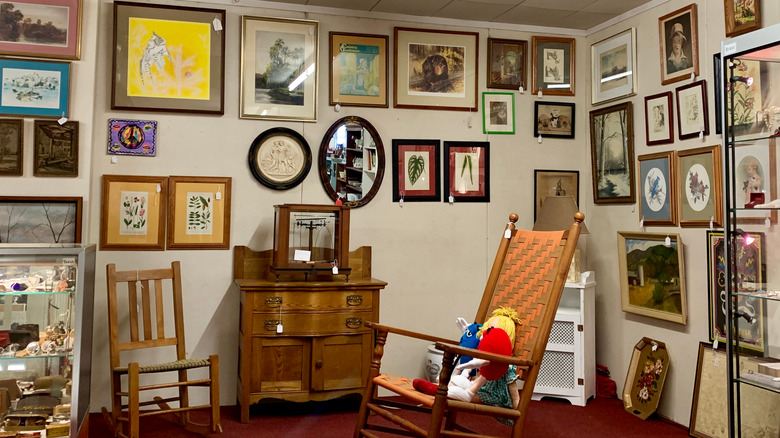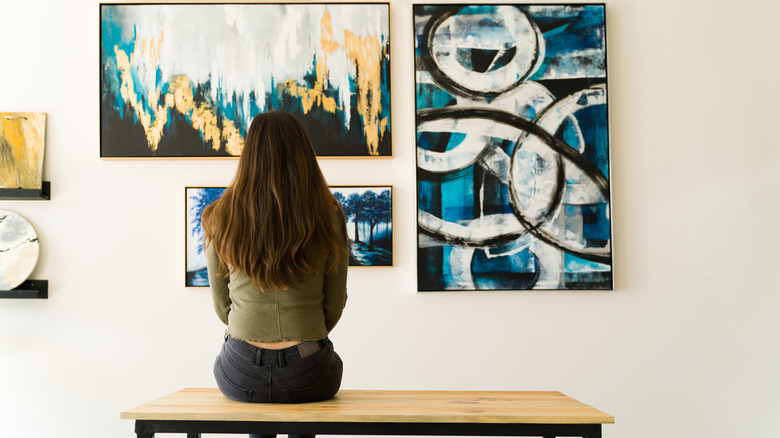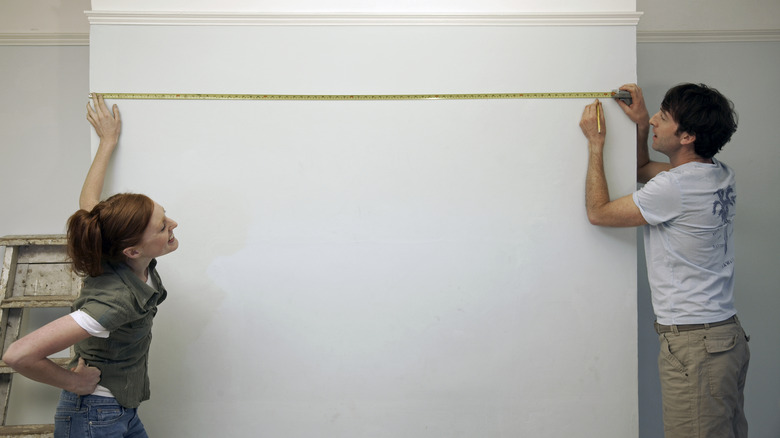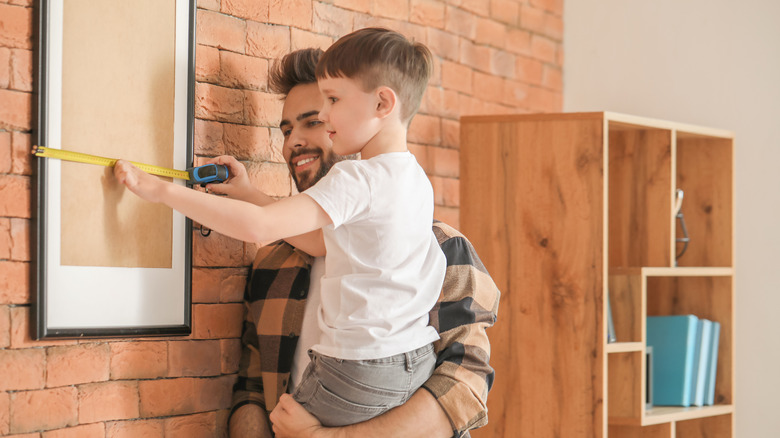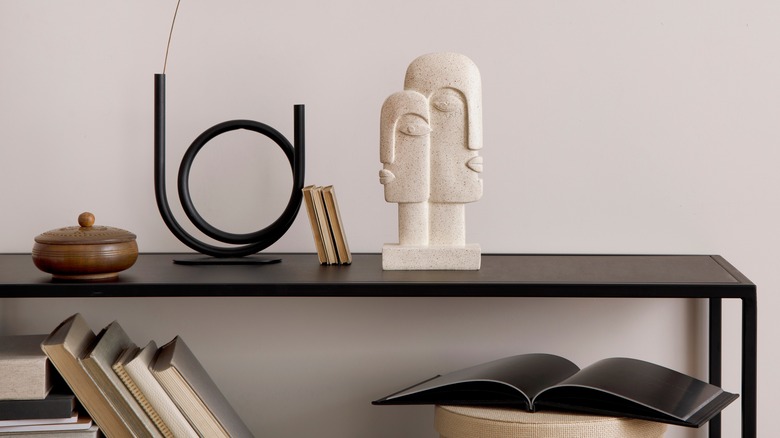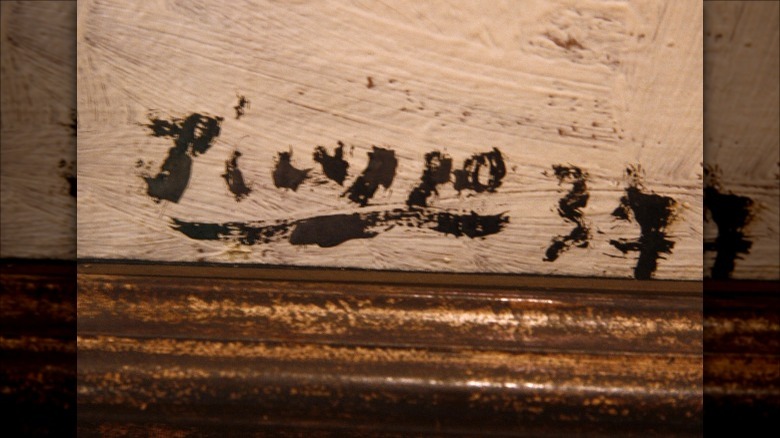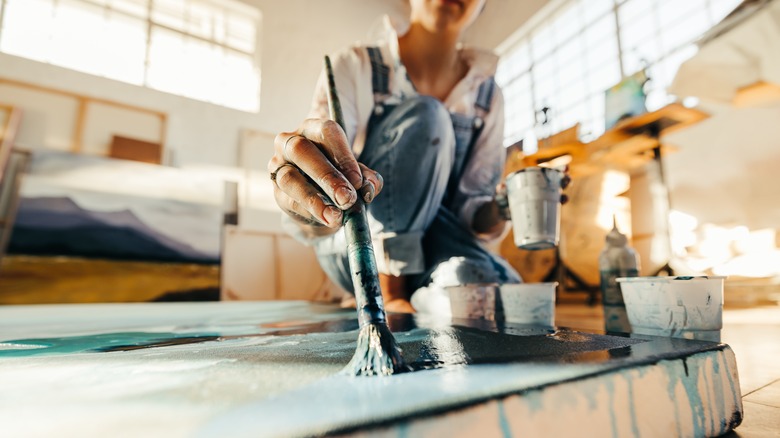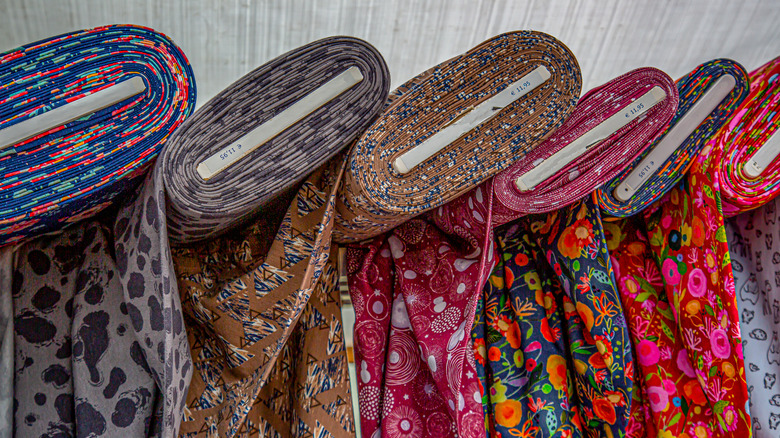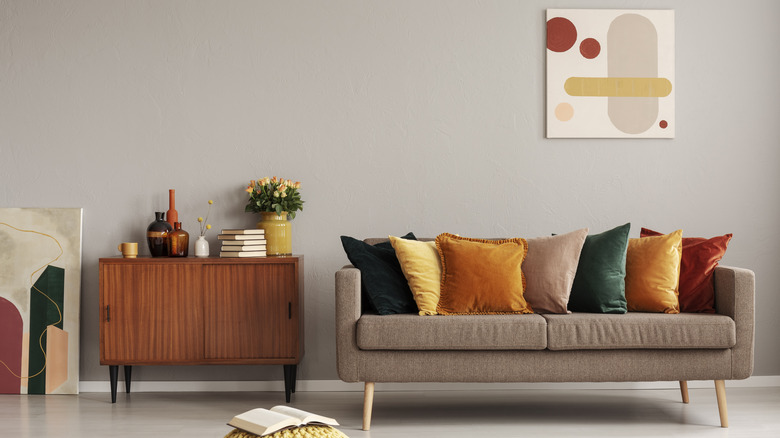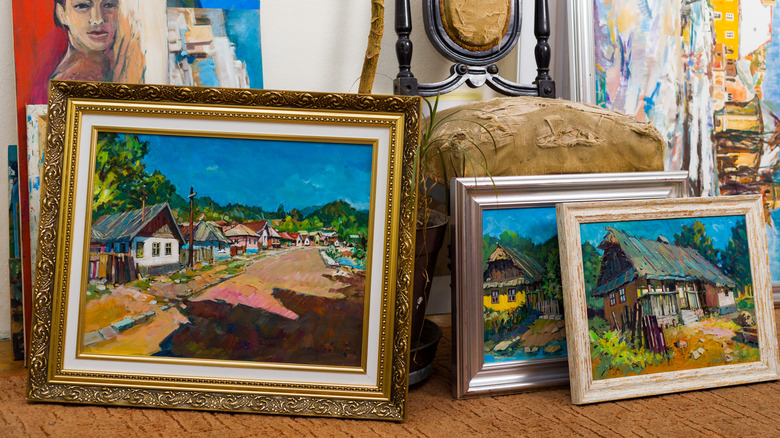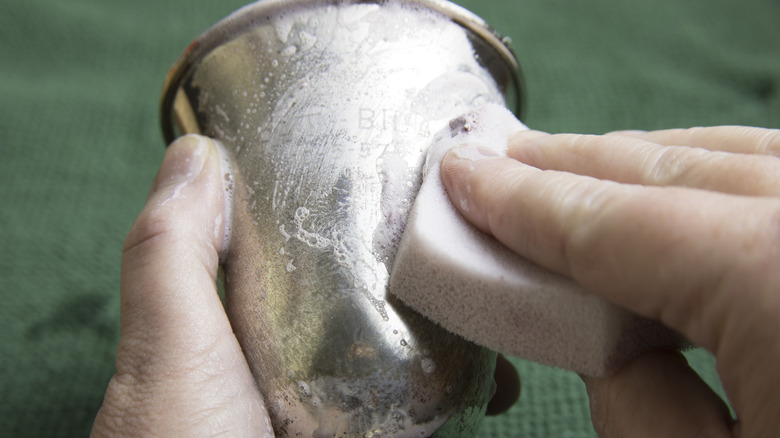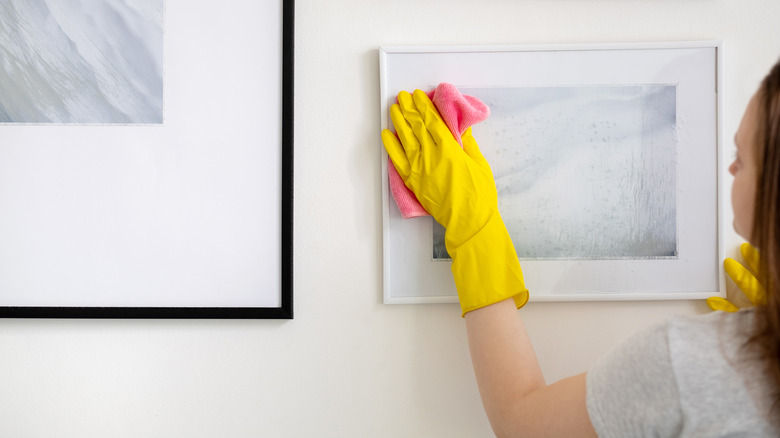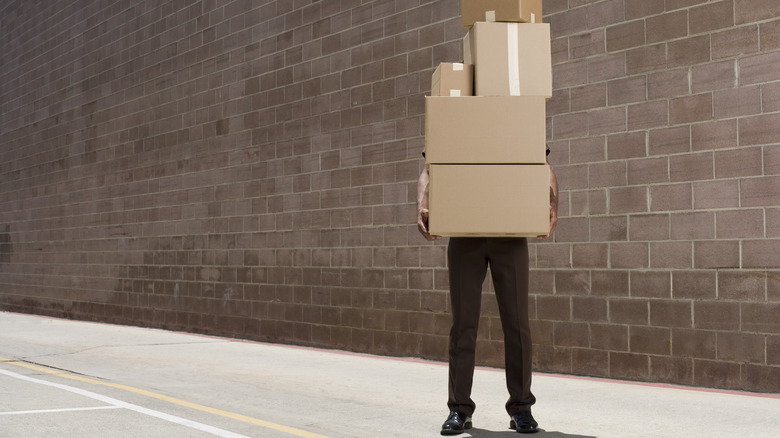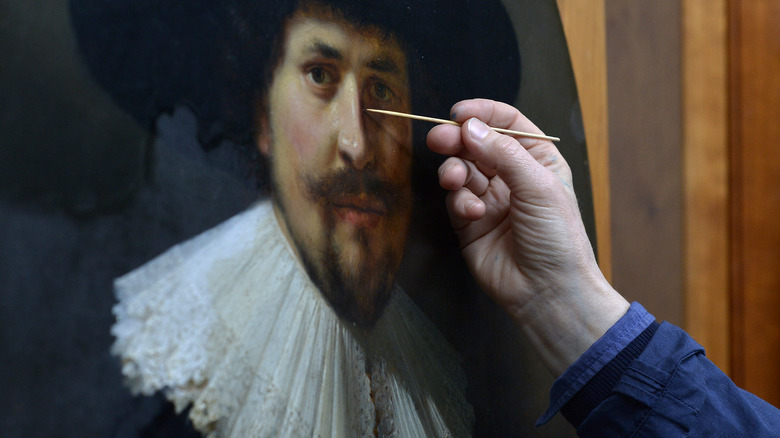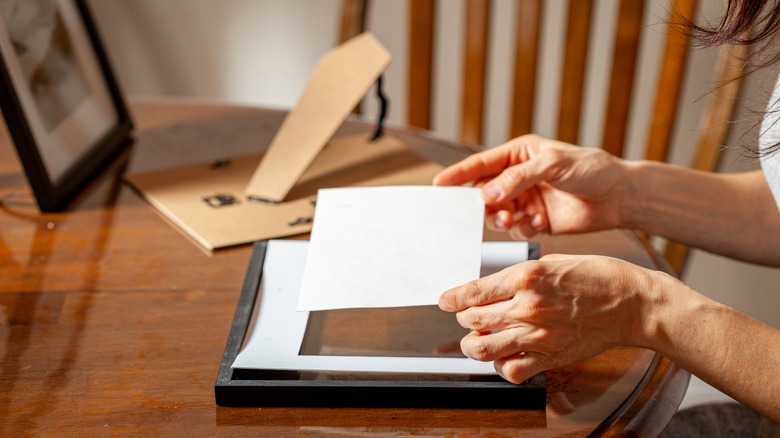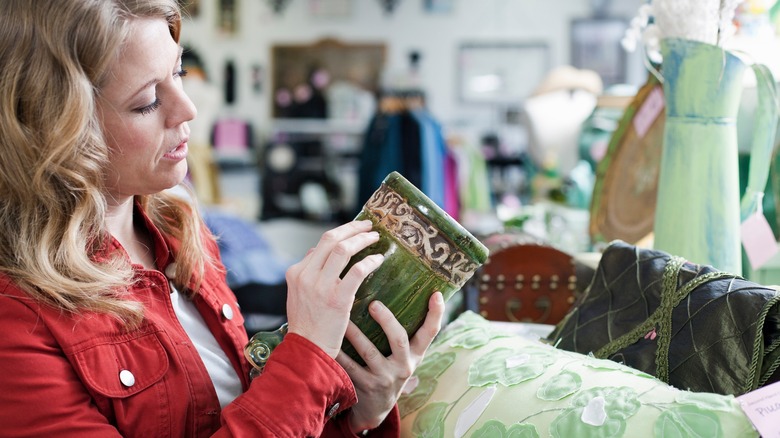20 Tips For Buying Art For Your Home At A Thrift Store
There are plenty of places that could be your go-to choices when shopping for home décor. However, if your aim is to make financially friendly purchases, then that list should include thrift stores. Although opting for used — or pre-loved — items may not have been the snazziest option in the past, times have changed, as have attitudes around secondhand shopping. Brett Heffes, CEO of Winmark, which is the corporation behind popular stores like Plato's Closet, Once Upon a Child, and Play It Again Sports, told CNBC, "When I started in this business, there was a stigma around purchasing previously owned items, and that stigma is gone."
On top of that, Heffes pointed out a key benefit of thrifty purchases: "Resale continues to provide value in these uncertain times." Indeed, according to Coupon Follow, people who shop at stores that sell secondhand items tend to save themselves around $1,760 each year. That can help if you're trying to decorate your home on a budget. You'll be able to save money on everything from furniture and curtains to throw pillows and incredibly affordable art. Some people have even come across valuable pieces while shopping at thrift stores, per Money Wise.
If you're intrigued by the idea of finding your own creative treasures — whether they're a lost masterpiece or simply the perfect item for your space — then you'll definitely want to check out the following savvy tips for buying art for your home at a thrift store.
1. Decide on your preferences
Are you into abstract art, or do you gravitate toward realistic landscapes? Perhaps collage has caught your eye, while minimalist pieces would work with your home's existing style. It can help to familiarize yourself with various kinds of art to help you narrow down what you want to pick up while browsing secondhand pieces.
2. Determine your budget
One reason to buy art at a thrift store is to save money. However, if you're tempted by too many items being sold for temptingly affordable prices, you might spend more than you expected. That's why you should set a budget beforehand and make sure you stick to it while shopping.
3. Measure your space
You may have specific spots in your home that could use a piece of art. In that case, be sure to measure each space so that you know exactly what size piece you need. This can be even more important when buying secondhand art that you might not be able to return if it doesn't fit.
4. Measure the art
You'll also want to measure each piece of art before you purchase it. You don't want to buy something and bring it home only to find out that it's too big or too small to fit in the spot where you want to display it. Be sure to also account for a potential frame if necessary.
5. Consider all kinds of art
When shopping for secondhand art, look at more than just the paintings. You can also find other framed pieces, such as photography and illustrations. On top of that, many thrift stores sell different kinds of art, including macramé pieces, figurines, and sculptures. That's not to mention creative clocks and decorative lighting fixtures.
6. Look for a signature
There are various aspects to keep an eye out for while searching for art at a thrift store, including the condition and aesthetics. Beyond that, you'll also want to see if you can spot a signature. While you might not find a piece by Picasso, you may discover who created the new-to-you piece.
7. Use apps to identify art
In the same way that apps can help you identify plants and songs, they can also help you identify pieces of art or give you an idea of the genre, medium, and even the artist. Simply take a quick pic, upload it to the app, and check out the information that pops up.
8. Remember pieces can be altered
If you're not intimidated by a little DIY action, then you can alter thrifted art. For instance, you can buy a large old-school landscape and use the image as your base. From there, simply add bright colors or fun accents to update the piece and turn it into an original creation.
9. Pieces can be completely repurposed
Beyond making alterations to pieces of art that you find at a thrift store, you can also totally repurpose something special that you find. To give you an idea of what's possible, consider finding fabric with an artistic design and putting it in a frame or covering an item in resin to create a sculpture.
10. Check out older art
While older art can look outdated when sitting in a thrift store aisle, it can take on an entirely new vibe if you use it strategically in your home. Whether it's antique, vintage, or retro, you can pair it with the same sort of décor or contrast it with a chic and contemporary style.
11. Expect the unexpected
You can definitely come across art that you won't find anywhere else when you shop at a thrift store. Frankly, that can be part of the fun. That's why you should expect the unexpected and keep an open mind. Consider any piece that catches your eye, even if it's not what you originally had in mind.
12. Create a gallery wall
If you can't find one larger piece of secondhand art to fill the space in your home that could use a creative touch, then create an affordable gallery wall. Opt for multiple pieces that are the same or various sizes, and all add to a cohesive and eye-pleasing effect.
13. Frames aren't dealbreakers
If you find a piece of art that you love but hate the frame that it's in, don't worry because it doesn't have to be a dealbreaker. You can easily change the frame to suit your taste and your home's style. Either find a different secondhand frame or splurge on something new.
14. Think about TLC
Even if a piece of art is sold as a secondhand item doesn't mean it won't require TLC. Over time hand-carved wooden sculptures may need to be oiled to prevent them from drying out, while metal pieces may need to be polished. Consider whether you're willing and able to provide any necessary care.
15. Consider what can be fixed
The art you find at a thrift store won't necessarily be in tip-top shape, but minor damage or aging shouldn't prevent you from picking it up. Consider whether the problem can be fixed. For instance, some rips can be repaired, faded paint can be refreshed, and some dirty spots can be removed.
16. Beware of icky issues
Unfortunately, some issues can't be fixed, which means that no matter how much you love the art, it might not be worth your time or money. You may find a permanent stain, cracked wood, dangerously damaged glass, or flaking paint. Fabric pieces can also be soiled, smelly, and infested with bugs.
17. Consider shipping or transportation first
If you purchase a small painting or lightweight sculpture, then getting it home shouldn't be a problem. However, if you've found something big or heavy, you may need to arrange for proper transportation before you purchase the piece or have it shipped.
18. Carefully clean your thrifted art
You may automatically throw thrifted clothes into a washing machine as soon as you get home. However, you might not know how to clean secondhand art without damaging it. Before whipping out a cloth and soap, do some research to figure out how to properly clean your piece.
19. Investigate after your purchase
Look into the piece to find out who created it and where it came from — you might even find out it's valuable. You should also open up frames to see if anything is tucked inside behind the piece or if a signature and date are hidden away.
20. Become a regular shopper
The more often you head out to the thrift store to see what art is available, the more likely you are to spot something special or a great deal. You can also figure out what days new stock is added to the thrift store shelves so that you can get there before other shoppers.
